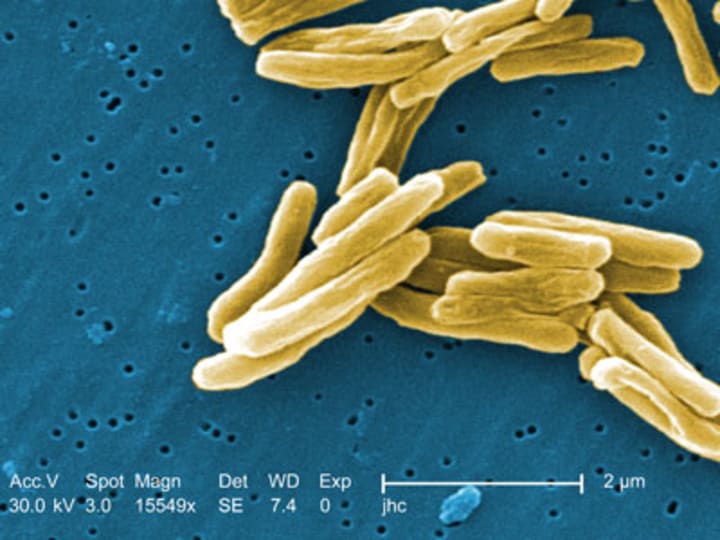
“I think there’s still a perception that tuberculosis is a disease of the past, that it is not an active disease really.”
That’s what many people in the world think of tuberculosis, but not Martha Benezet, who’s an expert on this disease with Abt Associates.
Benezet shares her insights to Devex on how the world can fight a disease that’s curable, yet as recently as 2011 still infected about 125 per 100,000 worldwide.
Over the next three years, the World Health Organization and Global Fund to Fight AIDS, Tuberculosis and Malaria estimated an annual funding gap of $1.6 billion for TB treatments.
Amid the budget woes donor countries face, Benezet urged local country partners to be “more courageous” and “creative” in finding innovative solutions. She noted the world has only scratched the surface in terms of the potential of public-private partnerships in fighting TB.
She said the world needs to grapple with the rising cases of multidrug-resistant TB and higher incidences of HIV and TB co-infection in the coming years.
But for Benezet, the most effective solution is for countries to work better with their partners.
Benezet talks more below on how the development actors and local country partners can help one another to fight TB.
What should the international community do to fill the gap?
TB has been an area that has long been pointed out as underfunded. In many ways it has. But in many ways, there’s a lot of progress in securing funding and a lot has been done by countries themselves.
I think now with sequestration and other issues, now is the time for us to be creative and courageous and work with our country partners to figure out other ways to implement their TB programs, because research says that TB programs, once funded, are very cost-efficient and the outcomes are very good. I think we must work with countries to help them find ways to fund these solutions themselves.
What kinds of innovative financing do you think countries should consider?
Something that actors are doing in many of our programs is working their health finance reforms through rigorous cost analysis and really looking at how much those introduced programs cost, so governments have a clear view of how much they would have to set aside to deal with their own issues. I think that sort of rigorous analysis is essential.
I would also say that I think we have just scratched the surface of the potential in public-private partnerships. I think there’s a huge potential there to be latched onto. There have been several successful public-private partnerships. We have some work in high-burden countries such as Ethiopia and India that have really brought the private sectors into the health system as effective TB caregivers.
I think there are solutions that are there already. We just have to look at it in a different way and find them together within the context of each country.
What challenges do local country partners face in looking for innovative solutions to TB and how are they going forward?
Even in high-burden countries, sometimes TB is not the top priority. It’s one of the top priorities but it may not top the agenda. I think there needs to be a lot of advocacy work. For me, TB advocates are very passionate people and if they can be in the right rooms, with the right people, that can help. That can also link back to tying-in with civil society. There are many, many HIV-related organizations, for example. There are fewer TB-related organizations, but there are many people suffering from TB.
WHO and the Global Fund estimate that the biggest funding gap is in treating multi-drug-resistant TB. How big is the problem?
MDR-TB is no doubt a global threat right now. The issue is even in high-burden countries, case finding is low for MDR-TB. This is well-documented within WHO. I think the first concern is that before countries can figure out how much they need to have in their coffers to pay for MDR-TB, they have to really understand what is their prevalence, what is the incidence rate, so that they can actually understand the figure that they’re coping with.
In general, case finding of MDR-TB is a tougher nut to crack. It can be frighteningly expensive to manage. But there are resources through the WHO and the Stop TB partnership to access second-line drugs at a more affordable price. I think a lot of countries have taken advantage of that to their benefit.
What should be done to counter the projected rise of MDR-TB cases over the coming years?
I would say, work on your partnership with each other because that’s the only way we can get solution. High-burden countries need to work with the WHO and the Stop TB partnership to deliver their data or be more active in addressing the issue, by looking for more solutions through partnerships both with international organizations and with organizations within their countries, academic institutions and research institutions.
Aside from funding woes, what are the biggest challenges in the fight against TB?
It is the leading opportunistic infection for people who are HIV-infected. So between TB and HIV, the co-infection rate and the rise of MDR-TB are our biggest challenges.
Read more development aid news online, and subscribe to The Development Newswire to receive top international development headlines from the world’s leading donors, news sources and opinion leaders — emailed to you FREE every business day.








